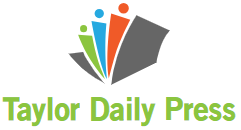In most European countries, screening for breast cancer begins at age 50. In the United States, but also in Sweden, for example, it starts at age 40. Scientists have not yet agreed on which is better. It seems that women themselves are more willing to wait if they know the pros and cons.
Researchers from University of Colorado I asked nearly 500 women. 39 to 49 years of age without increased risk of breast cancer to complete a decision-making tool in which they received more information about the pros and cons of screening.
overdiagnosis
“The decision tool in this study informed women about the chance of preventing breast cancer death through mammography, but it also mentioned the drawbacks of screening, including false positive results and overdiagnosis,” said researcher Laura Scherer. saintias.nl“A false positive is a test result that leads to further follow-up testing such as an ultrasound or biopsy, but ultimately the person does not have cancer. Overdiagnosis is when early-stage cancer is found on a mammogram that is harmless. Because doctors don’t know which early-stage cancers are harmful and which are not, treatment is often recommended, but for some it’s unnecessary. The tool showed that getting a mammogram in your 40s has less benefit and a higher chance of a false positive than getting a screening in your 50s, which is one reason women are considering delaying mammograms.
Postponement of investigation
Before completing the tool, 8.5 percent of participants said they wanted to wait until they were 50 to take the population-based survey. After receiving the additional information, that number rose to 18 percent. “Women at low risk of cancer are less likely to benefit from screening, so the cost-benefit tradeoff looks different for them than for women at high risk of breast cancer,” Shearer says.
The researchers describe their findings as particularly relevant to Americans. Preventive Services Task Force It recently changed its recommendation for population-based screening from informed decision making to screening every two years for women ages 40 to 49. So the question is whether it does more harm than good.
Report an error
Importantly, there was no increase in the number of participants who reported never wanting to have a mammogram. The researcher found that even more surprising. “There were a few women who said they would never have a mammogram, and that number did not increase as they became more informed. This suggests that providing information about mammograms does not completely deter women from getting screened.”
More than a quarter of participants reported that overdiagnosis was different from what their doctor had told them, and nearly a third felt that information about overdiagnosis conflicted with other texts about population screening.
Therefore, providing additional information about the benefits and harms of mammography may change the intention to screen for some women. Therefore, the decision-making tool is an important tool to help women make an informed decision about when to start breast cancer screening. The researchers say that doctors or policymakers need to develop new ways to inform women so that they can make better decisions.
We have previously written about a study that showed that it is best to start population-based breast cancer screening at age 40 and continue until age 79. Currently, women in the Netherlands aged 50 to 74 receive a phone call every two years. About 70 percent respond to this. Starting early and continuing for longer can save lives. Screening every two years for women aged 40 to 74 reduces the risk of death by 30 percent. If you start population-based screening at age 50, the number of deaths will be reduced by 25.4 percent. This seems like a big difference, but in reality it still involves small possibilities. However, it seems a little better to start population-based research at age 40.

“Total coffee specialist. Hardcore reader. Incurable music scholar. Web guru. Freelance troublemaker. Problem solver. Travel trailblazer.”







More Stories
GALA lacks a chapter on e-health
Weird beer can taste really good.
Planets contain much more water than previously thought